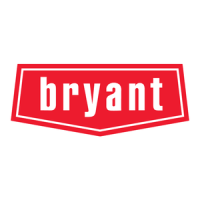5
S CANADA: NSCNGPIC. For a copy, contact Standard Sales,
CSA International, 178 Rexdale Boulevard, Etobicoke
(Toronto), Ontario, M9W 1R3, Canada
Combustion and Ventilation Air
S US: Section 9.3 of the current edition of NFPA 54/ANSI Z223.1
Air for Combustion and Ventilation
S CANADA: Part 8 of the current edition of CAN/CSA B149.1,
Venting Systems and Air Supply for Appliances
Duct Systems
S US a nd CANADA: Current edition of Ai r Condi tioning
Contr ac t ors Ass ociat i on (ACCA) Manual D, Sheet Met al and Ai r
Condit ioning Contrac tors National Associat i on (SMACN A), or
Ame rica n Society of He a ting, Refr ige r ation, and Ai r Condit ioning
Enginee r s (ASHRAE) Funda mental s Ha ndbook Chapter 35
Acoustical Lining and Fibrous Glass Duct
S US and CANADA: Current edition of SMACNA, NFPA 90B as
tested by UL Standard 181 for Class I Rigid Air Ducts
Gas Piping and Gas Pipe Pressure Testing
S US: Current edition of NFPA 54/ANS I Z223. 1 NFGC; Cha pte rs
5, 6, 7, and 8 and nationa l plumbing codes .
CANADA: Current edition of CAN/CSA--B149.1, Pa rt s 4, 5, 6,
and 9.
In the state of Massachusetts:
S This product must be i ns ta l le d by a li ce nse d plumber or gas f itter.
S When flexible connectors are used, the maximum length shall
not exceed 36 in. (914 mm).
S When lever type gas shutoff s are used they shal l be T--handle type.
S The use of copper tubing for gas piping is not approved by the
state of Massachusetts.
Electrical Connections
S US: Current edition of National Electrical Code (NEC) NFP A
70
S CANADA: Canadian Electrical Cod e CSA C2 2.1
Condensate Drain Connection
S US: Current edition of National Standard Plumbing Code,
Section 8.7.
S Canada: Current edition of National Plumbing Code of Canada
in Canada.
ELECTROSTATIC DISCHARGE (ESD)
PRECAUTIONS PROCEDURE
FURNACE RELIABILITY HAZARD
Failure to follow this caution may result in unit component
damage.
Electrostatic discharge can affect electronic components.
Take precautions during furnace installation and servicing
to protect the furnace electronic control. Precautions will
prevent electrostatic discharges from personnel and hand
tools which are held during the procedure. These
precautions will help to avoid exposing the control to
electrostatic discharge by putting the furnace, the control,
and the person at the same electrostatic potential.
CAUTION
!
1. Disconnect all power to the furnace. Multiple disconnects
may be required. DO NOT TOUCH THE CONTROL
OR ANY WIRE CONNECTED TO THE CONTROL
PRIOR TO DISCHARGING YOUR BODY’S
ELECTROSTATIC CHARGE TO GROUND.
2. Firmly touch the clean, unpainted, metal surface of the fur-
nace chassis which is close to the control. Tools held in a
person’s hand during grounding will be satisfactorily dis-
charged.
3. After touching the chassis, you may proceed to service the
control or connecting wires as long as you do nothing to
recharge your body with static electricity (for example; DO
NOT move or shuffle your feet, do not touch ungrounded
objects, etc.).
4. If you touch ungrounded objects (and recharge your body
with static electricity), firmly touch a clean, unpainted metal
surface of the furnace again before touching control or
wires.
5. Use this procedure for installed and uninstalled (ungroun-
ded) furnaces.
6. Before removing a new control from its container, discharge
your body’s electrostatic charge to ground to protect the
control from damage. If the control is to be installed in a
furnace, follow items 1 through 4 before bringing the con-
trol or yourself in contact with the furnace. Put all used and
new controls into containers before touching ungrounded
objects.
7. An ESD service kit (available from commercial sources)
mayalsobeusedtopreventESDdamage.
ACCESSORIES
See Product DataSheet for a list of accessories for this product.

